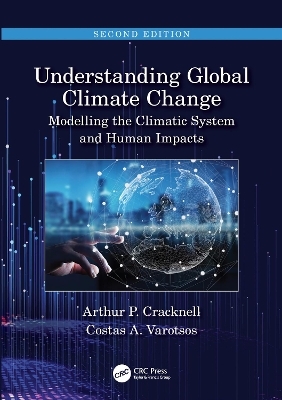
Understanding Global Climate Change
CRC Press (Verlag)
978-0-367-19591-5 (ISBN)
Climate change, a familiar term today, is far more than just global warming due to atmospheric greenhouse gases including CO2. In order to understand the nature of climate change, it is necessary to consider the whole climatic system, its complexity, and the ways in which natural and anthropogenic activities act and influence that system and the environment. Over the past 20 years since the first edition of Understanding Global Climate Change was published, not only has the availability of climate-related data and computer modelling changed, but our perceptions of it and its impact have changed as well. Using a combination of ground data, satellite data, and human impacts, this second edition discusses the state of climate research today, on a global scale, and establishes a background for future discussions on climate change. This book is an essential reference text, relevant to any and all who study climate and climate change.
Features
Provides a thought-provoking and original approach to the science of climate.
Emphasises that there are many factors contributing to the causation of climate change.
Clarifies that while anthropogenic generation of carbon dioxide is important, it is only one of several human activities contributing to climate change.
Considers climate change responses needed to be undertaken by politicians and society at national and global levels.
Totally revised and updated with state-of-the-art satellite data and climate models currently in operation around the globe.
Arthur Cracknell graduated in Physics from Cambridge University in 1961 and received his PhD in electronic band structure of metals from Oxford University in 1964. He worked as a lecturer in Physics at the Universities of Singapore and Essex before moving to Dundee University where he rose to become the Carnegie Professor of Physics. In Dundee he established a pioneering group in remote sensing with many graduate students (MSc and PhD). He and his collaborators have published over 300 research papers. With several different co-authors he has published 30 books on solid state physics and various aspects of remote sensing applications, several with Taylor & Francis/CRC, including of course the first edition of "Observing Global Climate Change." He is now an emeritus professor and continues to pursue his scientific interests. Costas Varotsos graduated in Physics from National and Kapodistrian University of Athens in 1980 and received his PhD in Atmospheric Physics from University of Thessaloniki in 1984. He teaches since 1989 Atmospheric and Environmental Physics and Chemistry, which are also the main topics of his research interests (e.g., Remote Sensing, Climate Dynamics, Atmospheric Physics & Chemistry, Environmental Change, Non-linear Processes). He has established four international research Laboratories in the Department of Environmental Physics of NKUA. He has published 14 monographs with Springer and more than 300 research papers in refereed journals and contributed with specific chapters to 6 edited books in the fields of Remote Sensing, Atmospheric Physics & Chemistry, and Environmental Change.
The Great Global Warming Scare. The Atmosphere. The Hydrosphere. The biosphere, lithosphere, and cryosphere. Energy, the Driver of the Climate System. Climate data, analysis, modelling. The IPCC and its recommendations. Climate Change - Energy resources - nuclear accidents. References. Index.
| Erscheinungsdatum | 29.07.2021 |
|---|---|
| Zusatzinfo | 60 Tables, black and white; 8 Line drawings, color; 29 Line drawings, black and white; 34 Halftones, color; 52 Halftones, black and white; 42 Illustrations, color; 81 Illustrations, black and white |
| Verlagsort | London |
| Sprache | englisch |
| Maße | 178 x 254 mm |
| Gewicht | 1040 g |
| Themenwelt | Naturwissenschaften ► Biologie ► Ökologie / Naturschutz |
| Naturwissenschaften ► Geowissenschaften ► Geografie / Kartografie | |
| Naturwissenschaften ► Physik / Astronomie ► Angewandte Physik | |
| ISBN-10 | 0-367-19591-7 / 0367195917 |
| ISBN-13 | 978-0-367-19591-5 / 9780367195915 |
| Zustand | Neuware |
| Informationen gemäß Produktsicherheitsverordnung (GPSR) | |
| Haben Sie eine Frage zum Produkt? |
aus dem Bereich


